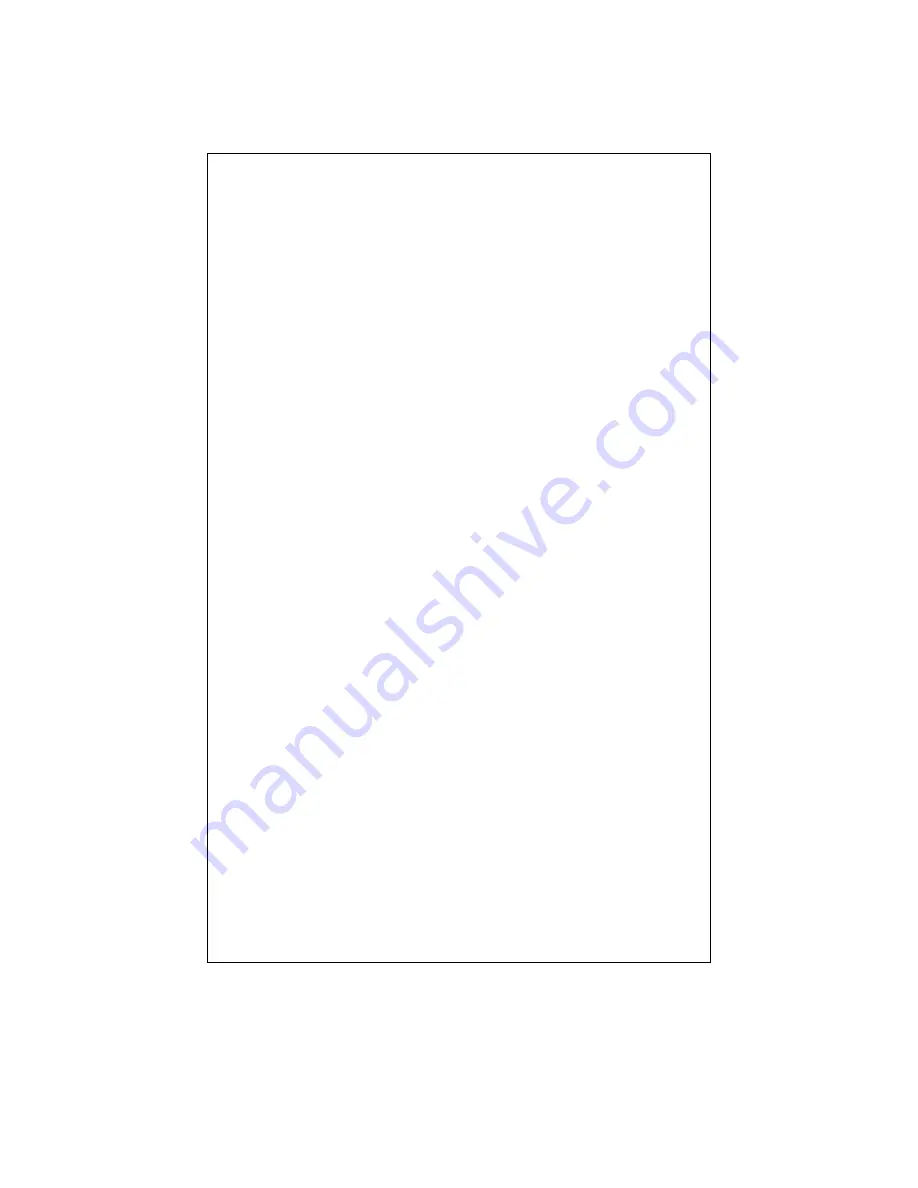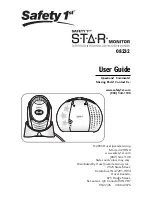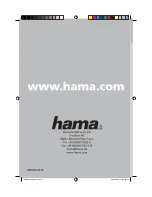
5. The program will prompt you to create a file name for the data which has been collected. Additional data which
is downloaded at a future date can be appended to this same file to create a continuous record. You do not need
to save a different file each time you download; simply select the existing file and the new data will be added, or
appended, to it.
Please Note: The Save window will tell you that the existing data in that file will be erased – but it will NOT.
WaterGraph will only add the new data and not replace the old data.
6. The graphing portion of the program will open automatically.
To view the collected data in graphical form (open an existing file):
1. Select ‘Open Data File’ and then select the file you want to view.
2. A window will open showing the data on a graph. Time is displayed along the bottom axis. Centibars of tension
is on the left side axis. Temperature, and other scales, are displayed on the right side axis. Switch closure and
rain data display in bar format.
3. You can change the time scale by selecting one of the default choices or entering a value and pressing the ‘Set
Number of Days’ button. Move the sliding bar at the bottom to view all areas of the graph.
4. If ‘Standard Range’ is selected under Centibar Scale, then the Y axis for tension readings will be limited to 0 -
100 centibars (kilopascals). This can be manually overwritten in the boxes which show the 0 and the 100 to
any scale between 0 to 239. If you select Automatically Scale, the range will be from the lowest to the highest
readings in the file. Changing the range can help you zoom in on portions of the graph for better detail. The
scale can be reversed by selecting the ‘Descending Scale’ box.
5. Similarly, the ranges for Temperature can be selected. If you do not want to show temperature data. Select ‘Hide
Temp Scale.’
6. The background for the graph can be configured using the ‘Background’ menu. Colors or black & white with line
identifiers can be selected. Options for gridlines and On/Off data display are available.
7. The data in the display can be printed by selecting Print from the choices in the ‘File’ pull down menu. Selecting
Landscape format in your printer’s setup will provide a larger printed graph.
8. The graph can be saved to your computer’s clipboard by holding down the ‘Alt’ key and then pressing the ‘Print
Screen’ key. Once it is saved onto the clipboard, you can Paste it into another program.
9. Individual graph lines can be turned on and off by selecting ‘Show’ and ‘Hide’ in the legend. They can also be
highlighted bold by clicking on the color bar in the legend, or left and right clicking directly on the graph lines.
10. Selected sensors may be averaged by selecting them individually in the ‘Average’ box in the legend and then
clicking ‘Apply Average Settings.’ Selecting ‘Hide sensors included in averages’ will display only the average.
11. Threshold lines can be shown on the graph for ‘too wet’ and ‘too dry’ reference points.
12. Your viewing options can be saved under File: Save Graph Layout. This way every time you open a data file, it
will appear with your saved format.
13. You will notice as you move the cursor, that crosshair lines give you references to both axes. When the cursor is
close to a graphed line, the date/time and value will be displayed for that position in the boxes labeled ‘Crosshair
Position.’ Note that you have to select the sensor type in the Date/time box to obtain the appropriate value.
To view the collected data in spreadsheet form:
1. Open a spreadsheet program, such as Microsoft Excel
®
.
2. Open the saved data file. This has the file extension .CSV, for Comma Separated Value. Be sure to select ‘All
Files’ when looking.
3. Excel
®
will automatically import the CSV data into columns. Note the headings will not line up directly with the
data columns, so you will have to move them, or create new labels.
4. You can create custom graphing in Excel
®
to display the data in different formats, or in combination with other data.
Note: Monitors with serial numbers 20000 or higher have the ability to output data in SDI-12 format. Contact
IRROMETER for details.
Note: You can communicate with the WATERMARK Monitor through terminal emulation programs, such as
Microsoft
®
HyperTerminal
®
, to set up custom reading programs. Contact IRROMETER for more information.
FIELD OPERATION
— With the SETUP programmed and the sensors connected, your WATERMARK Monitor can
now be used to read soil moisture tensions at any time, and at the preprogrammed times it is scheduled to
automatically read data. Once the START DATE/TIME has been reached, the Monitor will begin its automatic
reading and data collection. You may take manual readings of the sensors at any time. Simply push the
4
























